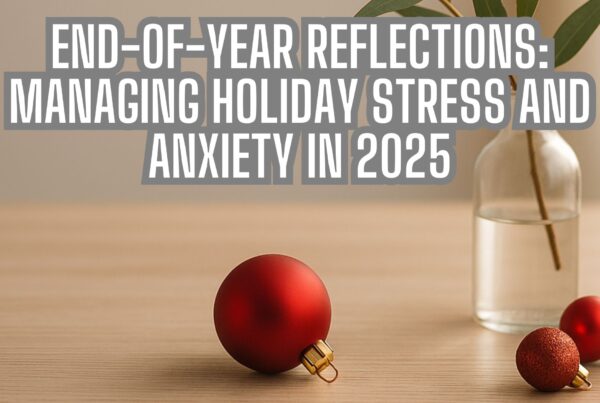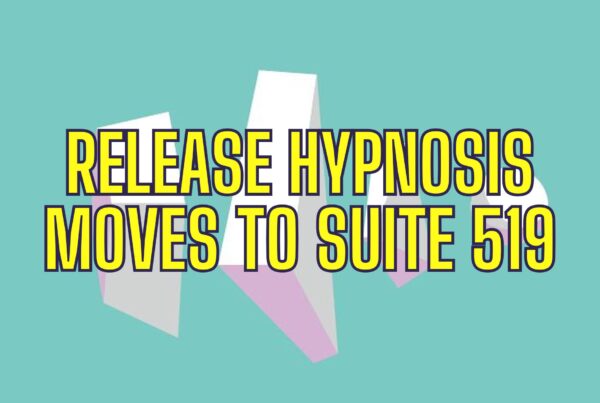What Hypnosis Is and What It Isn’t
It’s easy to understand why people are confused about what hypnosis is and what it isn’t. Hypnosis is one of those topics that stirs up endless fascination and misunderstanding. Thanks to films and pop culture, it’s often depicted as a mystical tool for mind control, where individuals fall into a trance and lose all sense of autonomy. Who hasn’t seen a movie where someone gets hypnotised and suddenly starts revealing secrets or acting against their will? This portrayal is far from the truth and only adds to the confusion.
In reality, hypnosis is a well-studied psychological tool with practical applications for improving mental and physical health. It’s not about losing control but about focusing your attention and imagination in a purposeful way. Let’s explore some of the myths surrounding hypnosis and break down what it truly is – and isn’t!
What Hypnosis Really Is
Hypnosis helps guide the mind into a heightened state of focus and suggestibility. It’s not the trance-like state seen in films but a mental state where your attention becomes intensely focused. This allows you to respond more readily to suggestions, which can be helpful for managing pain, reducing stress, and even changing behaviours.
The key to successful hypnosis lies in the participant’s willingness to engage in the process. It’s less about being “under control” and more about using your mental resources in a directed way—like a dance where the hypnotist leads, but you decide how far to follow. Hypnosis has been shown to benefit conditions like anxiety, depression, and chronic pain. However, it’s not a one-size-fits-all cure.
The History and Science of Hypnosis
Hypnosis isn’t a modern invention; it has deep historical roots. The ancient Egyptians and Greeks used trance-like states in healing rituals, where patients visited “sleep temples” for rest and recovery. In the 18th century, Franz Mesmer introduced “mesmerism,” which laid the groundwork for modern hypnosis.
By the late 19th century, pioneers like James Braid and Sigmund Freud helped establish hypnosis as a legitimate tool in psychotherapy. Today, neuroimaging studies show that hypnosis can activate specific brain regions linked to perception and emotion, offering tangible evidence of its effects.
The Myths and Misconceptions of Hypnosis
Misconceptions about hypnosis often create fear and confusion. Here are some of the most common myths:
- Myth: Hypnosis is mind control.
- Reality: Hypnosis cannot make you do anything against your will. You remain fully aware and in control at all times.
- Myth: Only certain people can be hypnotised.
- Reality: Almost everyone can experience hypnosis to some degree, especially when guided by a trained professional.
- Myth: Hypnosis can recover lost or repressed memories.
- Reality: Hypnosis is not a reliable tool for memory retrieval and can sometimes create false memories.
- Myth: Hypnosis is a one-session cure-all.
- Reality: Hypnosis works best as part of broader therapeutic approaches like ACT and requires multiple sessions for lasting change.
The Practical Benefits of Hypnosis
While hypnosis isn’t a magical solution, it offers several practical benefits when used within therapy. Research shows that hypnosis can help with chronic pain management, reduce anxiety, and improve overall well-being. Conditions like irritable bowel syndrome (IBS), fibromyalgia, and even chemotherapy-induced nausea can be alleviated through hypnotic techniques.
In mental health, hypnosis works well with therapies like Acceptance and Commitment Therapy (ACT) and Cognitive Behavioural Therapy (CBT). It helps clients remain present, develop psychological flexibility, and manage distressing thoughts and emotions without becoming overwhelmed. Hypnosis is not a replacement for other forms of therapy but can enhance outcomes significantly.
How Hypnosis Works in Practice
During a typical hypnosis session, the hypnotist guides the client into a relaxed state using breathing exercises and visualisation techniques. Once in this state, the hypnotist offers suggestions aligned with the client’s goals—such as reducing anxiety or alleviating chronic pain.
Not all hypnosis involves closing your eyes and lying down. Some techniques can even be done while walking or engaging in light movement. The goal is to help clients focus their mental energy to break free from habitual patterns of thought and behaviour.
FAQs
- What is hypnosis used for in therapy?
- Hypnosis is commonly used to help manage pain, reduce anxiety, address phobias, and support behaviour change. It is often combined with therapies like ACT for more effective results.
- Can anyone be hypnotised?
- Most people can experience some degree of hypnosis, although suggestibility varies. It’s less about “being hypnotisable” and more about willingness and openness to the process.
- Is hypnosis dangerous?
- When performed by a trained professional, hypnosis is safe. It’s not mind control or brainwashing but a focused mental state that helps people achieve specific goals.
- Does hypnosis really work for pain relief?
- Yes, hypnosis has been shown to help reduce chronic pain in conditions like fibromyalgia, IBS, and cancer treatment-related nausea. It’s not a cure but can significantly improve quality of life.
- Can hypnosis help with quitting smoking?
- Hypnosis can be an effective tool for quitting smoking, particularly when paired with a strong desire to quit and other behavioural strategies.
Release Hypnosis Melbourne Hypnotherapy
Since 2015, Lawrence Akers has been working under the name Release Hypnosis offering Hypnotherapy and ACT based work to the people of Melbourne or an online service. Based on St Kilda Rd, Release Hypnosis is an easy and convenient location to get to and accessible by the ANZAC station train and tram stop. Release Hypnosis can help with a wide range of presenting issues, and I offer a free 30 minute no obligation discovery call for those who are unsure if hypnotherapy is the right way forward for them.
Book Your FREE 30 Minute Consultation With Release Hypnosis NOW!
You may also like to read:
Hypnotherapy: A Guide to Healing Through the Subconscious
The Neuroscience of Gratitude and Effects on the Brain: Unlocking Mental Resilience
Best Hypnotherapy Resources 2024: Release Hypnosis Top Blogs
What Is The Success Rate of Hypnosis?








